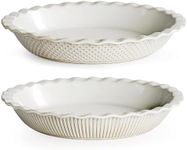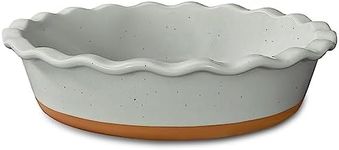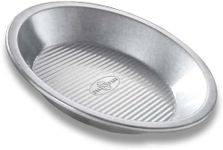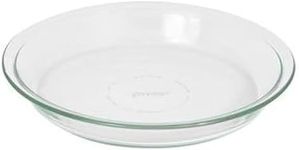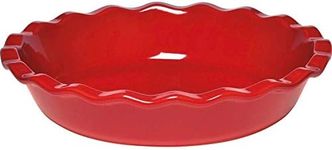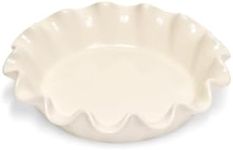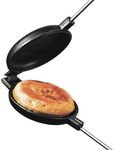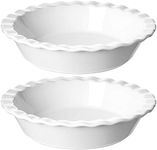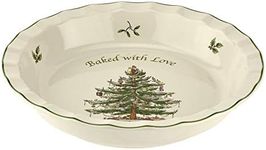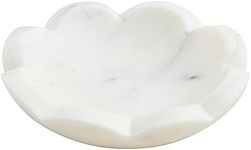Buying Guide for the Best Deep Dish Pie Pans
Choosing the right deep-dish pie pan can make a significant difference in the quality of your pies. The right pan will ensure even baking, proper crust texture, and ease of use. When selecting a deep-dish pie pan, consider the material, size, depth, and additional features that suit your baking needs. Understanding these key specifications will help you make an informed decision and achieve the best results in your baking endeavors.MaterialThe material of the pie pan affects heat distribution, baking time, and the final texture of your pie. Common materials include metal, glass, ceramic, and silicone. Metal pans, such as aluminum or stainless steel, heat up quickly and provide a crisp crust. Glass pans allow you to monitor the browning of the crust and ensure even baking. Ceramic pans retain heat well and are ideal for slow, even baking, while silicone pans are non-stick and flexible, making them easy to clean. Choose a material based on your baking preferences and the type of pies you frequently make.
SizeThe size of the pie pan determines the amount of filling and the number of servings. Standard deep-dish pie pans typically range from 9 to 10 inches in diameter. A 9-inch pan is suitable for smaller pies and fewer servings, while a 10-inch pan is ideal for larger pies and more servings. Consider the size of your oven and the number of people you usually serve when selecting the size of your pie pan.
DepthThe depth of the pie pan is crucial for deep-dish pies, as it affects the amount of filling the pan can hold. Deep-dish pie pans usually have a depth of 1.5 to 2 inches. A deeper pan allows for more filling and is perfect for pies with thick layers of fruit or custard. If you prefer pies with a generous amount of filling, opt for a deeper pan. For standard pies, a shallower depth may suffice.
Non-Stick CoatingA non-stick coating on a pie pan can make it easier to remove the pie without damaging the crust. Non-stick pans are also easier to clean. However, some bakers prefer uncoated pans for their ability to produce a crisper crust. If you prioritize convenience and ease of cleaning, a non-stick pan may be the right choice for you. If you value a crispier crust, you might opt for an uncoated pan.
Rim DesignThe design of the rim can affect the appearance and structure of your pie crust. Some pie pans have fluted rims that help create decorative edges, while others have flat rims for a more traditional look. Consider the type of crust you prefer and whether you want a decorative edge when choosing a pie pan with a specific rim design.
Oven CompatibilityEnsure that the pie pan you choose is compatible with your oven. Some materials, like glass and ceramic, may have specific temperature limits. Additionally, check if the pan is safe for use in other appliances, such as microwaves or dishwashers, if you plan to use them for reheating or cleaning. Choose a pan that fits well within your oven and meets your usage requirements.
